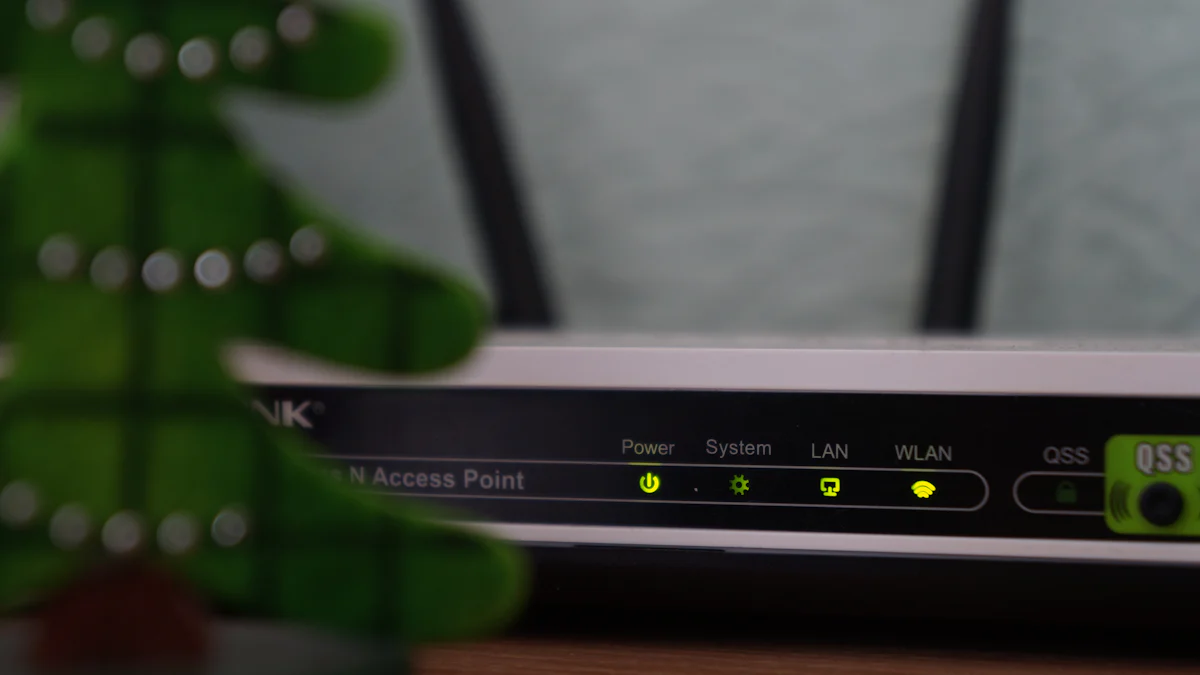Discover the Best Lightweight NAPs for Service Provisioning

In the realm of service provisioning, NAPs (Network Access Points) act as vital connectors. Their lightweight design and IP65 protection grade ensure seamless connectivity in various environments. Today, we delve into the significance of these distributed service enablers. From enhancing network reliability to simplifying installations, lightweight NAPs play a crucial role. Let's explore the features and benefits that make them indispensable in modern networking setups.
Features of Lightweight NAPs

Protection Grade: IP65
Lightweight NAPs with a protection grade of IP65 offer superior defense against dust and water, ensuring optimal performance in outdoor settings. The IP65 rating signifies complete protection against dust ingress and low-pressure water jets from all directions. This robust shielding makes the NAP resilient to harsh environmental conditions, enhancing its longevity and reliability.
Lightweight Design
The lightweight construction of NAPs brings unparalleled convenience to installations and maintenance tasks. With a focus on portability and ease of handling, these devices streamline deployment processes. Their compact build reduces strain during setup and allows for effortless relocation when necessary. Moreover, the ergonomic design promotes efficient utilization in diverse service provisioning scenarios.
Network Access Point (NAP) Capabilities
As pivotal components in service provisioning, NAPs serve as the linchpin connecting distribution network cables to access network drop cables in FTTX networks. Their versatile capabilities encompass high capacity and seamless connectivity features essential for establishing robust network infrastructures. By facilitating reliable data transmission between network segments, NAPs ensure uninterrupted service delivery.
Benefits of Using Lightweight NAPs
Efficient Service Provisioning
When it comes to service provisioning, leveraging lightweight NAPs (Network Access Points) offers a myriad of advantages. These devices significantly enhance the efficiency of network setups by streamlining connectivity processes. By utilizing lightweight NAPs, service providers can ensure seamless data transmission and network accessibility. The simplicity in handling and installation allows for quick deployment, reducing operational downtime.
Moreover, the lightweight nature of these NAPs simplifies maintenance tasks, enabling swift troubleshooting and upgrades. This ease of management contributes to overall service reliability and customer satisfaction. With NAPs designed for effortless handling, service providers can optimize their operations and deliver consistent connectivity solutions.
Durability and Reliability
The durability of NAPs equipped with an IP65 protection grade is unmatched in various environmental conditions. These resilient devices withstand harsh elements, ensuring continuous service availability. By integrating IP65-rated NAPs into network infrastructures, service providers can guarantee long-term reliability and performance consistency.
In outdoor settings where exposure to dust and water is inevitable, the robust construction of lightweight NAPs becomes indispensable. Their ability to endure challenging environments safeguards network integrity and minimizes potential disruptions. Service providers can rely on these durable NAPs to maintain high service standards regardless of external factors.
Distributed Service Networks
Within distributed service networks, the role of lightweight NAPs is pivotal in establishing reliable connections between different network segments. These devices serve as essential bridges that enable seamless data flow across distributed infrastructures. By ensuring stable connections, lightweight NAPs contribute to uninterrupted service delivery and enhanced user experiences.
The importance of reliable connections in distributed service networks cannot be overstated. Lightweight NAPs play a crucial role in maintaining consistent communication pathways, supporting efficient data exchange between various network components. Service providers benefit from the reliability offered by these devices, ensuring optimal performance across distributed environments.
Installation Tips for Lightweight NAPs

Proper Splicing
When it comes to lightweight NAPs, ensuring proper splicing is paramount for seamless connectivity. Here are some essential tips to consider when handling splicing tasks:
Maintain Cleanliness: Before initiating the splicing process, make sure the NAP enclosure and fiber cables are free from dust and debris. Clean surroundings promote optimal splicing outcomes.
Use Quality Tools: Utilize high-quality splicing tools to guarantee precision and efficiency during the process. Reliable tools contribute to accurate fiber alignment and secure connections.
Follow Manufacturer Guidelines: Adhere to the manufacturer's instructions for splicing techniques and equipment usage. Compliance with guidelines ensures compatibility and enhances overall splicing performance.
Perform Test Splices: Conduct test splices on sample fibers before proceeding with actual connections. Testing helps identify any potential issues early on and allows for adjustments if needed.
Secure Fiber Management: Properly manage fiber routing within the NAP enclosure to avoid strain or bending that could impact signal transmission quality.
Mention the importance of correct splicing
Correct splicing is crucial for maintaining network integrity and optimizing performance in lightweight NAP installations. By emphasizing precise alignment and secure connections, correct splicing ensures reliable data transmission across network segments. The significance of correct splicing lies in:
Minimizing Signal Loss: Accurate splicing reduces signal attenuation, preserving data integrity throughout the network infrastructure.
Enhancing Network Stability: Correctly spliced fibers contribute to stable connections, preventing disruptions and ensuring consistent service delivery.
Improving Longevity: Well-executed splices enhance the longevity of network components, reducing maintenance requirements over time.
Ensuring Compatibility: Properly aligned fibers guarantee compatibility with various network devices, supporting seamless data flow.
By prioritizing correct splicing practices in lightweight NAP deployments, service providers can optimize network performance and reliability.
In wrapping up, lightweight NAPs emerge as indispensable assets for seamless service provisioning. Opting for the right NAP ensures reliable connectivity and efficient network operations. Remember to prioritize features like IP65 protection and durable design when selecting NAPs. By considering the benefits of easy installation and enhanced durability, readers can make informed choices. As Paul Efmorfidis highlights, embracing naps in various settings promotes well-being and productivity—a simple yet powerful strategy for success in today's fast-paced world.
See Also
Benefits of Compact Structure and Stability in Passive Optical Networks
Guide to Incorporating 24FO and MPO Cassette Modules in Dense Data Center Setup
Top 3 40G QSFP+ Active Optical Cables for Cisco and Arista Switches


